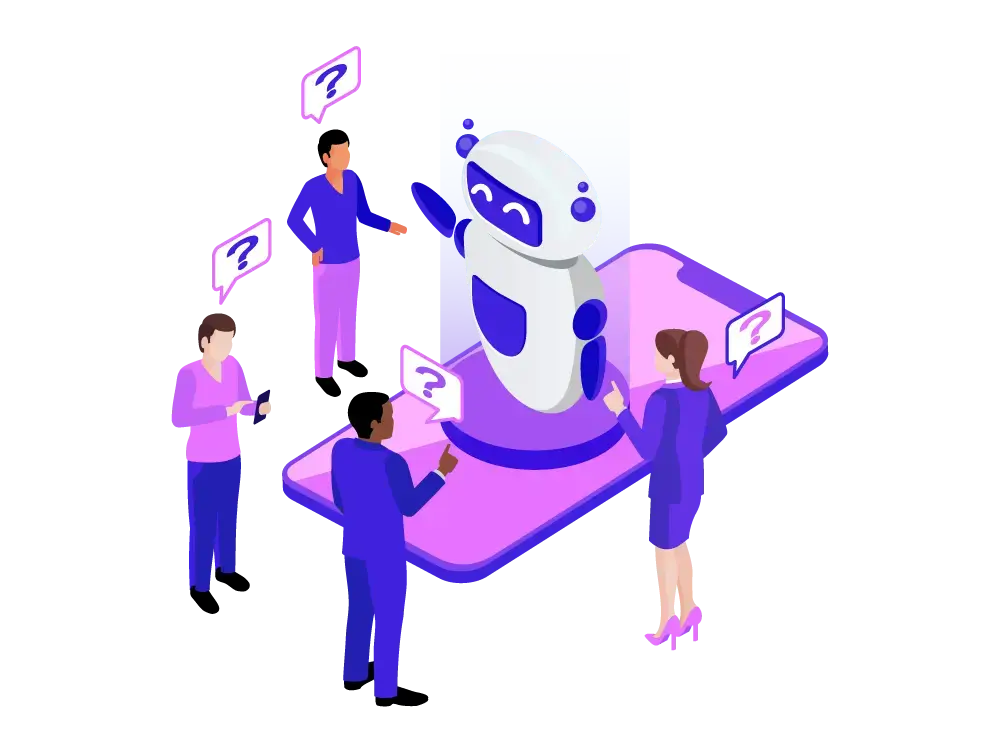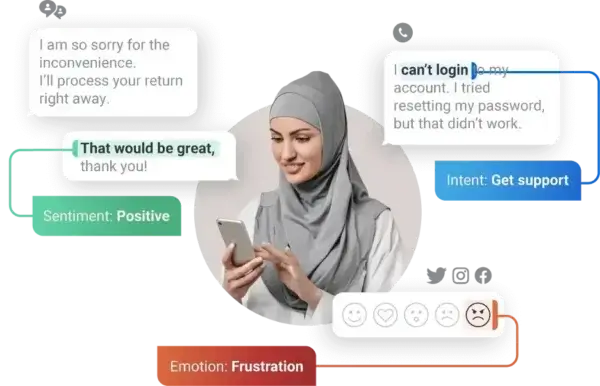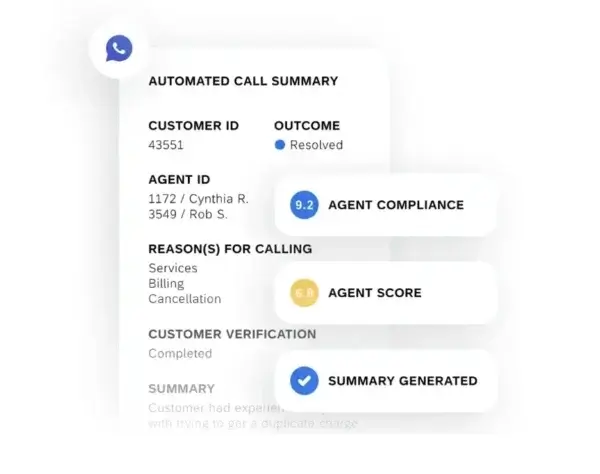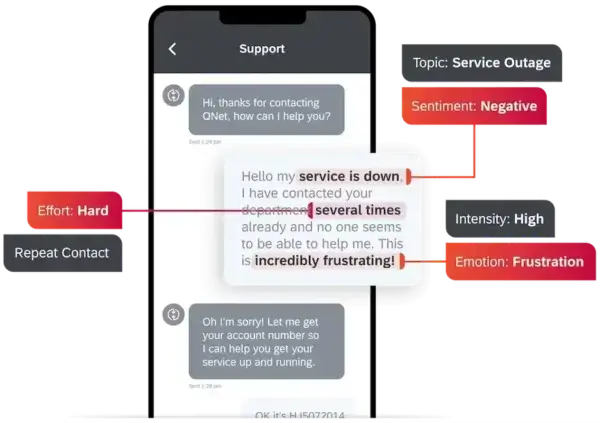Author: Adam Bunker
Subject Matter Expert: Shannon Thacker
A quick intro to generative AI in customer service
You’ve probably seen the phrase ‘generative AI’ in the headlines. Over the last couple of years, tools like ChatGPT have brought conversational artificial intelligence out of the pages of sci-fi books and put the power of large language models into the hands of the masses.
And, naturally, many businesses have started wondering and testing what these tools can do for them. At Qualtrics, we understand the opportunity for AI, because we’ve been baking it into our customer experience and brand management tools for years.
Free guide: Reimagining omnichannel CX in the age of AI
AI jargon buster:
Generative AI is an AI model that has been trained on large amounts of data and can generate human-like text, images, and even audio.
Large Language Models (LLM) are similar to GPTs (Generative Pre-trained Transformers) but are specifically designed for natural language tasks.
Natural Language Processing (NLP) is a subset of AI that focuses on analyzing and understanding human language.
Generative AI refers to the ability to instantly create written, spoken or illustrative responses to prompts, so it should come as no surprise that customer service – and the contact center – are key opportunity areas for this ever-improving technology.
In this guide, we’ll explore exactly what generative AI is capable of in customer service, what the perceived challenges are, and how to go about implementing it in a way that helps – rather than replaces – real human beings…

Use cases and benefits
So which contact center jobs can generative AI actually handle? There are a few key areas where artificial intelligence’s speed and scale can offer a powerful edge in customer interactions…
Understanding your customers
AI can serve a customer service function principally because it’s great at understanding the nature of calls and messages. Using natural language processing, the correct AI system can derive sentiment, effort and intent from conversations, and use that insight to generate prompts, offers or specific phrases for customer service agents to use.

AI can be used to analysis customer sentiment and generate responses
If, for example, an AI tool detects that a customer is feeling frustrated at having to explain what it knows to be a repeat issue, it might gently prompt the customer service agent to apologize for the fact that the customer has been in this situation once already – and generate a personalized discount tailored to that customer’s preferences.
It’s in these ever-present small moments within an experience, happening in real time, that can mean the difference between salvaging customer satisfaction or losing a customer altogether.
Improving agent performance
Generative AI isn’t just great at analyzing and recalling customer data – it can also be used to drive improvements in your customer service agents’ overall performance. By drawing together insights across every customer interaction, AI can paint a clear picture of agent script compliance, resolutions and customer sentiment, and help generate your agent scorecard – including quality management insights – as a result.
This is much more powerful – and accurate – than simply monitoring a sample set of agent calls, since it gives a more complete picture of agent performance. Generative AI tools might then suggest ways in which agents can improve on their next call, flag performance issues to managers, or even proactively schedule training sessions to help agents better meet customer expectations.
Improve efficiency
The goal of any contact center is to decrease both cost and time to serve, without sacrificing on quality and personalized service. Generative AI can help here by taking some of the more monotonous tasks off of your customer service agents’ hands.

AI can help generate automated call summaries
Post-call writeups, for example, are the kind of job that typically keeps agents from being able to help out on more calls –and they’re exactly the kind of thing that generative AI’s innate ability to summarize information accels at. Likewise, generative AI chatbots can, with the right guardrails in place, talk to customers themselves – either to triage customer queries or solve simpler issues outright.
With the right tools in place, your agents will be able to concentrate more on what they do best – helping customers – while also benefiting from an auto-generated set of next steps and bespoke follow-up actions for each customer, based on the nature of each interaction.
Best practices for leveraging generative AI
1. Infuse AI into every part of the contact center
Generative AI and machine learning tools work best when they have access to large volumes of data. When AI is baked into every corner of your contact center, and can analyze every kind of customer interaction, it’s able to spot trends and make suggestions that humans alone might miss.
In other words? AI can transform customer service by bridging information gaps across the various facets of customer service – from phone lines to emails, surveys and contact forms.

2. Use AI to listen externally
Artificial intelligence’s powers of human understanding aren’t limited to customer interactions that happen on owned channels.
Natural language processing can also be used to scour social media platforms and third-party review sites, where it can garner insights from unsolicited, unstructured customer feedback, and bring these into one consolidated hub. The more insights you have, the better you can improve the customer service experience.
3. Use AI to supplement human knowhow – not to replace it
Generative AI can be used in a bunch of customer service contexts – including using the tech for chatbots that directly communicate with customers. And in some instances, that’s absolutely the right approach. But it’s really important that your customer service offering doesn’t position AI as a replacement for real, empathetic human beings.
Ideally, customers prefer to have more options – not fewer. That means offering customer-facing generative AI as one option, and a phone line or live chat as another. The key is in prioritization: you want AI to handle the stuff humans don’t necessarily need to, so that each human agent is freed up and able to take on more complex customer queries.
The perceived challenges of generative AI
Any new technology is apt to generate valid concerns – or become overhyped and deployed without valid cause. Generative AI is no different, but for every perceived concern there’s a reasonable solution, often boiling down to choosing the right tools for the job.
AI doesn’t understand your specific organization or industry
The generative AI models built into contact center software are not the same as the ones used by the general public. They’re trained on billions of data points from millions of conversations, which makes them really adept at understanding the nature of customer queries.
Privacy concerns can deter approval
All privacy concerns are valid concerns. So how to proceed when it comes to using tools that are designed to listen in on customer conversations?
The solution is to choose AI tools that have appropriate contractual agreements in place to secure both business and customer data, and that meet industry and regulatory guidance. Qualtrics has a great, free AI security and privacy guide that can help here.
A lack of full control or oversight
Generative AI can get things wrong. ‘Hallucinations’ – the term given to chatbots presenting incorrect information as fact – is a concern, but can be mitigated by using models and tools designed specifically for customer service use cases.
Most AI chatbots designed for interacting with customers can be trained with guardrails to curb hallucinations and ensure that things stay on script and on brand.
Will generative AI replace customer support agent jobs?
AI should be seen as an enabler, rather than a replacer. Its best use is to either supplement human knowhow or do the work that frees human agents up to handle the most important customer interactions.
Think of it like this: Photoshop didn’t replace designers. Excel didn’t replace accountants. Instead, these emergent technologies found a place as powerful, business-critical tools in each professions’ arsenal.
The future of generative AI in customer service
As models improve, generative AI will continue to improve and only become a more and more central part of the customer service experience. More training data will lead to smarter sentiment analysis, more insight on customer behavior, and – ultimately – new ways to serve customers.
But humans will always be the beating heart of the contact center, and no customer service offering will ever be able to rely solely on artificial intelligence. The future, then, is a CX environment that’s enriched by AI insights, and that aids support agents with generative input designed to improve each interaction.
At Qualtrics, we’ve designed machine learning and generative AI solutions into our XMOS2 platform that help frontline staff unlock next-level customer service.
To us, the future of generative AI in this space lies in software that can proactively aid technical expertise, close experience gaps, boost empathy, and drive customer satisfaction.
Free guide: Reimagining omnichannel CX in the age of AI